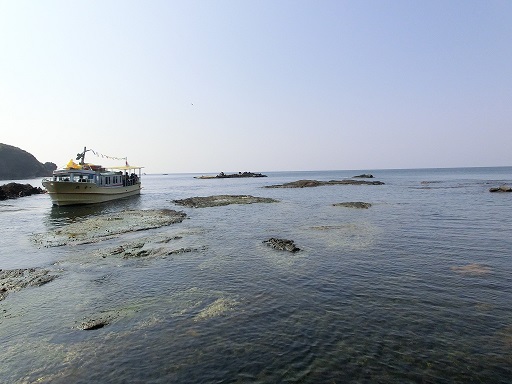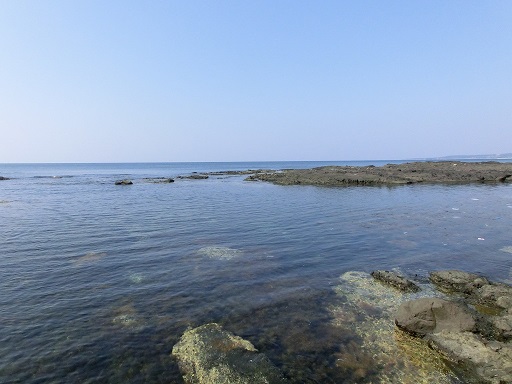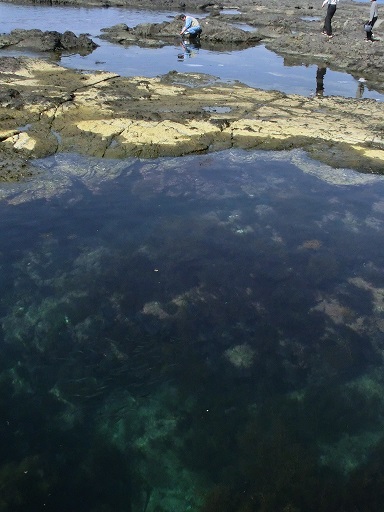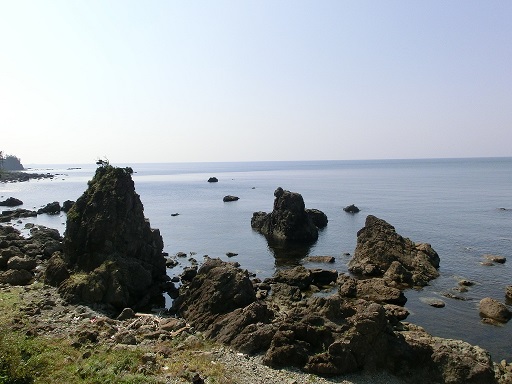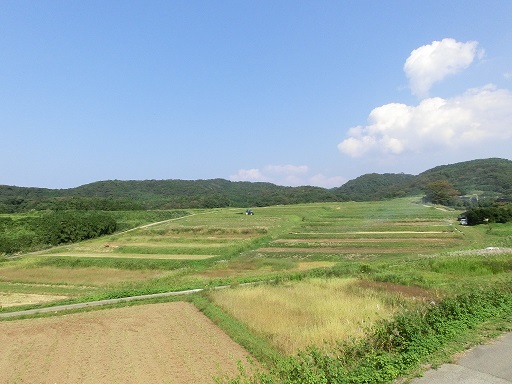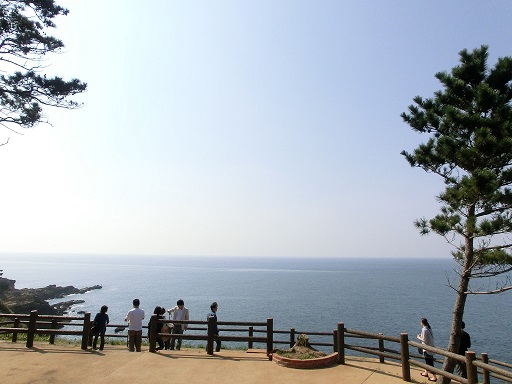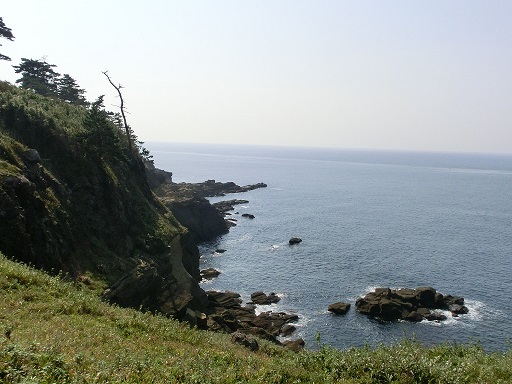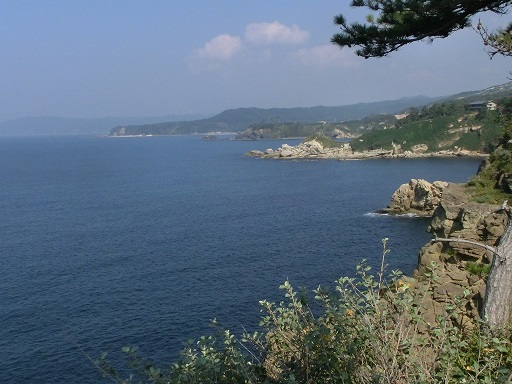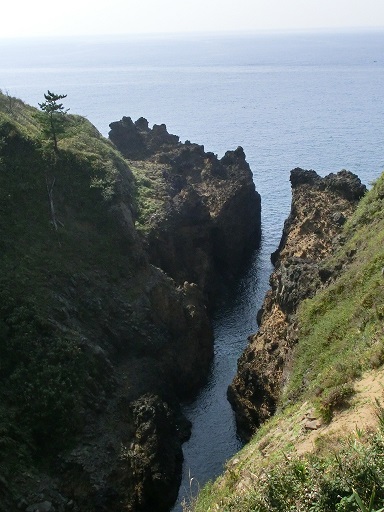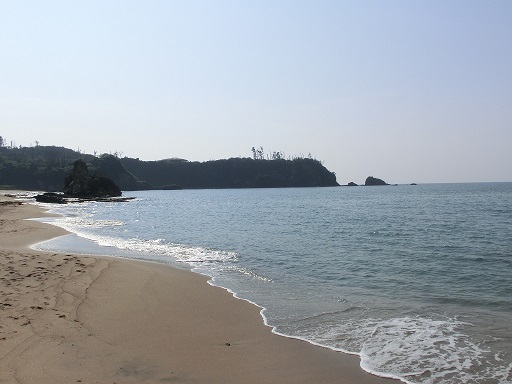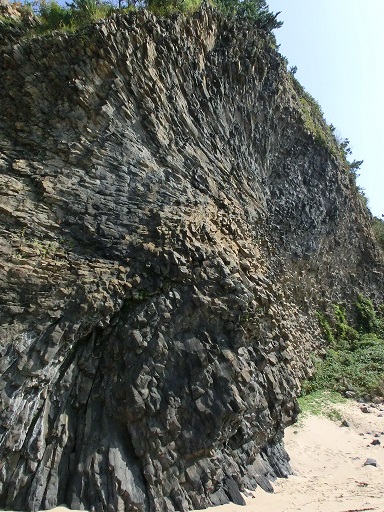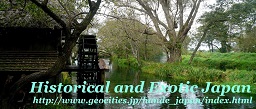|
Noto-Kongo in Noto Peninsula, Ishikawa

Noto Peninsula is extending into the Sea of Japan in the middle of Japan. On the west side of Noto Peninsula, eroded cliffs, gigantic rocks and odd rocks by violent waves of the Sea of Japan are lined more than twenty kilometers. There are a couple of scenic spots with eroded cliffs are located along the west coast of Noto Peninsula. This area is named Noto-Kongo.
"Ganmon" & "Takanosu Rock"
Approximately in the middle on the west coast of Noto Peninsula, "Ganmon" and "Takanosu" Rock are located. They are located at the south end of Noto Kongo. 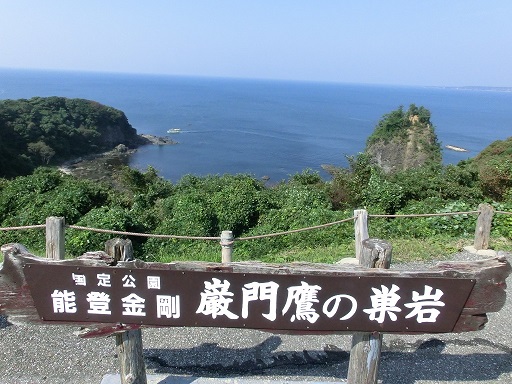
The sign in Japanese in the above picture says "Ganmon" & "Takanosu Rock". 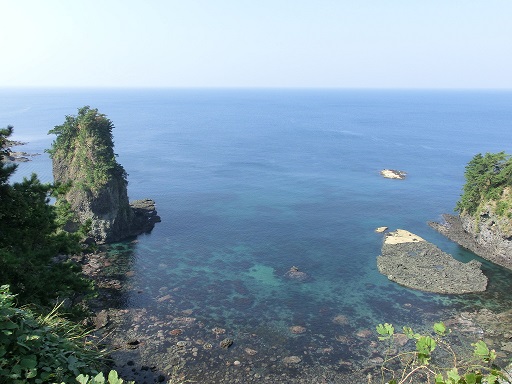
You can go down to the beach and you will see the gate-like rock on the beach, named Ganmon" Rock. 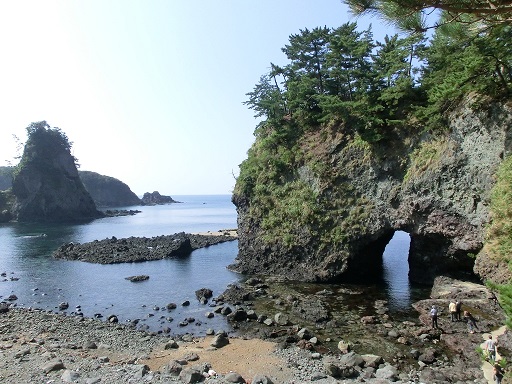
"Senjyojiki" Seashore
After passing through the tunnel of "Ganmon" Rock, you will see that the sea here forms a shoal is widely spread on a wide plane stone. |
